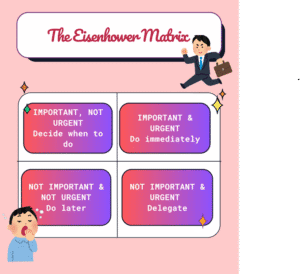The Art of Procrastinating Without Feeling Guilty
Ah, procrastination… that fancy word we use to say, “I’ll do it… later.”
It’s that sneaky little habit of putting off today what we could very well tackle now. Except we convince ourselves that tomorrow, we’ll be an upgraded version of ourselves: more motivated, more efficient. Spoiler alert: that day never comes.
So here’s how to procrastinate without the guilt trip.
In truth, procrastination is almost an art form — a well-rehearsed dance of “I’ll just watch one quick video before I start,” that somehow ends in a three-season Netflix binge. But let’s be clear: it’s not just laziness. Oh no. Procrastination is a complex mental strategy (or at least that’s what we like to tell ourselves to feel better).
Why are so many of us devout practitioners of this Olympic sport, especially at the end of the year when deadlines stare us down with bloodshot eyes? Because procrastinating is sometimes a way to reclaim control in the face of pressure. So what if we stopped beating ourselves up every time we push a task to tomorrow?
1. Why do we procrastinate? Because it feels good
Procrastination is the comfort zone’s best friend. It keeps us blissfully distant from stressful, boring, or intimidating tasks. I mean, why tackle that 30-page report now when you can spend a good hour searching for the perfect playlist to work to (without actually working)? Procrastination is our brain’s defence mechanism. It’s soft, it’s cozy — but let’s not kid ourselves, it solves nothing.
2. Procrastination: The psychological thriller where guilt enters stage left
The procrastinator is like a screenwriter addicted to plot twists. First, there’s the illusion of time: “I’ve still got weeks to do this.” Then comes the rising tension: “Okay, only two days left… but I’ll be in a better headspace tomorrow.” And finally, the last-minute adrenaline: “If I power through this in 48 hours with zero sleep, I can make it.”
It’s a cycle — guilt creeping in, pressure mounting, adrenaline peaking — terrifying yet oddly reassuring. Because let’s face it: we sort of love the last-minute high. It’s like living on the edge… from the comfort of your couch.
3. How to escape (a little) from procrastination
We’re not aiming to eliminate procrastination — let’s be honest, that’s like saying we’re giving up chocolate. Instead, let’s try to manage it. Here’s how to procrastinate productively (yes, that’s a thing):
The Pomodoro Technique:
Set a timer for 25 minutes and work without distractions. Then take a 5-minute break. After four Pomodoros, take a longer break. Sounds silly, but the idea of only needing to focus for “just 25 minutes” is oddly motivating. Think of it as a mini-race against the clock — only this time, you’re productive.
Break down the monster:
Instead of staring at a project that feels like Mount Everest, chop it up into manageable little hills. Climbing small slopes is a lot easier than scaling the Himalayas in one go.
Reward yourself (yes, really):
After each completed task, treat yourself. A short break, a square of chocolate (or a whole bar, let’s be real), or a cat video. The goal is to sneak a little joy into the work — even if you have to bribe yourself.
Tweak your workspace:
If your desk feels like a prison cell, odds are you won’t want to spend any time there. Make it a place that’s pleasant to be — you might even want to sit down and work. Stranger things have happened.
4. Smart procrastination: If you can’t stop it, do it well
Some tasks really should be postponed — and that’s perfectly fine. The trick is to procrastinate strategically.
If it’s important but not urgent, welcome to the Procrastinators’ Hall of Fame.
If it’s urgent and boring… well, you’re gonna have to bite the bullet.
But remember: the art of procrastination includes managing your guilt. If you’re going to procrastinate, at least do it with flair and efficiency.
Most of the time, procrastination is about prioritization. But occasionally, we’re so overwhelmed by everything that needs doing, we end up doing… nothing (makes perfect sense, right?). That’s where Eisenhower’s Matrix comes in. This little tool helps you sort through the chaos and — dare we say — procrastinate wisely.
Eisenhower Matrix: Your anti-procrastination weapon
The Eisenhower Matrix helps you organize tasks by urgency and importance. Anything that’s neither urgent nor important? Ditch it. Focus your energy where it counts, and clear the clutter from your mind.
Suddenly, the to-do list becomes less of a monster and more of a map.

5. Accept that not everything will be perfect

Often, procrastination stems from fear of failure or perfectionism gone wild. We delay because we’re afraid the result won’t measure up.
But guess what? It doesn’t have to be perfect. An imperfect task done is still leagues ahead of a task never started.
Procrastinate — but make it with style
Procrastination is part of life — especially during year-end chaos when energy’s low and demands are high. The key is to avoid spiraling into guilt, find clever ways to manage it, and most importantly, learn to laugh about it. So, dear procrastinator, ready to delay things… more effectively?
And if all that still leaves you lounging in existential dread with a to-do list as long as your streaming history — don’t worry. I’ve saved the cheat code for the truly committed procrastinators. Read it here.




